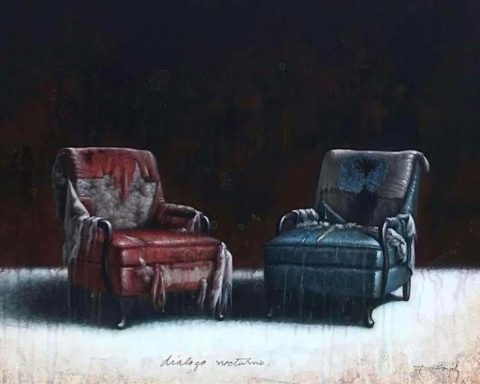MIAMI, United States. – A young Cuban woman who left her life behind in Havana fleeing from the crisis that the island is experiencing, told the Mexican media South Journal the nightmare he experienced during his transit through Central America: a kidnapping that lasted more than two weeks in the Mexican municipality of TapachulaChiapas, as well as threats, overcrowding, hunger, extortion and the constant fear of being murdered.
The young woman, who was identified as Dayanis, had sold her house, furniture, appliances and clothes in Havana, before leaving by plane from the capital of the Island to Guyanaand then cross several countries by land guided by supposed travel agencies and “coyotes.”
The journey took her first to Nicaragua and, later, to Guatemala. There began what he describes as an “ordeal”: the migrants, from various nations, were crammed into a safe house. “They treated us like animals, they gave us little food and we slept on dirty mats. Furthermore, those who were guarding us had visible firearms, so complaining was too risky,” said the young woman.
The situation worsened when reaching the border with Mexico. Through the windows of the room in which the migrants were held, they could barely see the rudimentary rafts that cross the Suchiate River. According to Dayanis, in the early morning the traffickers ordered them to board these rafts to advance towards Mexican territory. Once on the other side, conditions did not improve: their phones were taken away, they were branded with a temporary tattoo in the shape of an eagle, and they were put into vehicles with tinted windows. “They distributed us in taxis, forcing us to give a final address. I ended up in Tapachula, where I rented a room in the Montenegro neighborhood, hoping to find a safer place,” he explained.
The young woman, who worked as a professional chef in Cuba, lived in constant fear of rumors of white vans with tinted windows carrying armed men dedicated to kidnapping migrants. After a month of relative calm, its door was broken down one morning. Hooded men, carrying long weapons, took her away by force. “They beat me, blindfolded me and put me in a vehicle. “They kept yelling at me to shut up,” he recalled.
They took her to a place that the captors called “La Gallera.” There, at least 60 people, including her, were tied hand and foot and confined in a minimal space, surrounded by barbed wire. They were given spoiled food and constant threats. “They told us that if the family didn’t pay, they would mutilate us and then kill us. I had to beg my relatives for help. Thank God I remembered my cousin’s number and she was able to call other acquaintances to raise the $10,000 they demanded,” Dayanis said.
The young woman’s family did the impossible: they turned to friends and neighbors in different countries to raise the ransom. Seeing that the money was obtained, the kidnappers tried to demand more, but when they could not find a larger sum, they ended up accepting the initial amount. Once the amount was collected, they left her abandoned on the outskirts of the city, blindfolded. “They threw me around like I was a dog. I walked several kilometers until a woman found me, gave me temporary shelter and a phone number to contact my family,” he said.
Dayanis also assured that she was “traumatized” and that she did not report the kidnappers. “Why, if the authorities themselves are colluding?” he told South Journal. “Fortunately I am alive and many of My compatriots die because they do not have the financial resources to pay those ransoms.“We give everything simply to have a better life in the United States,” he concluded.
















